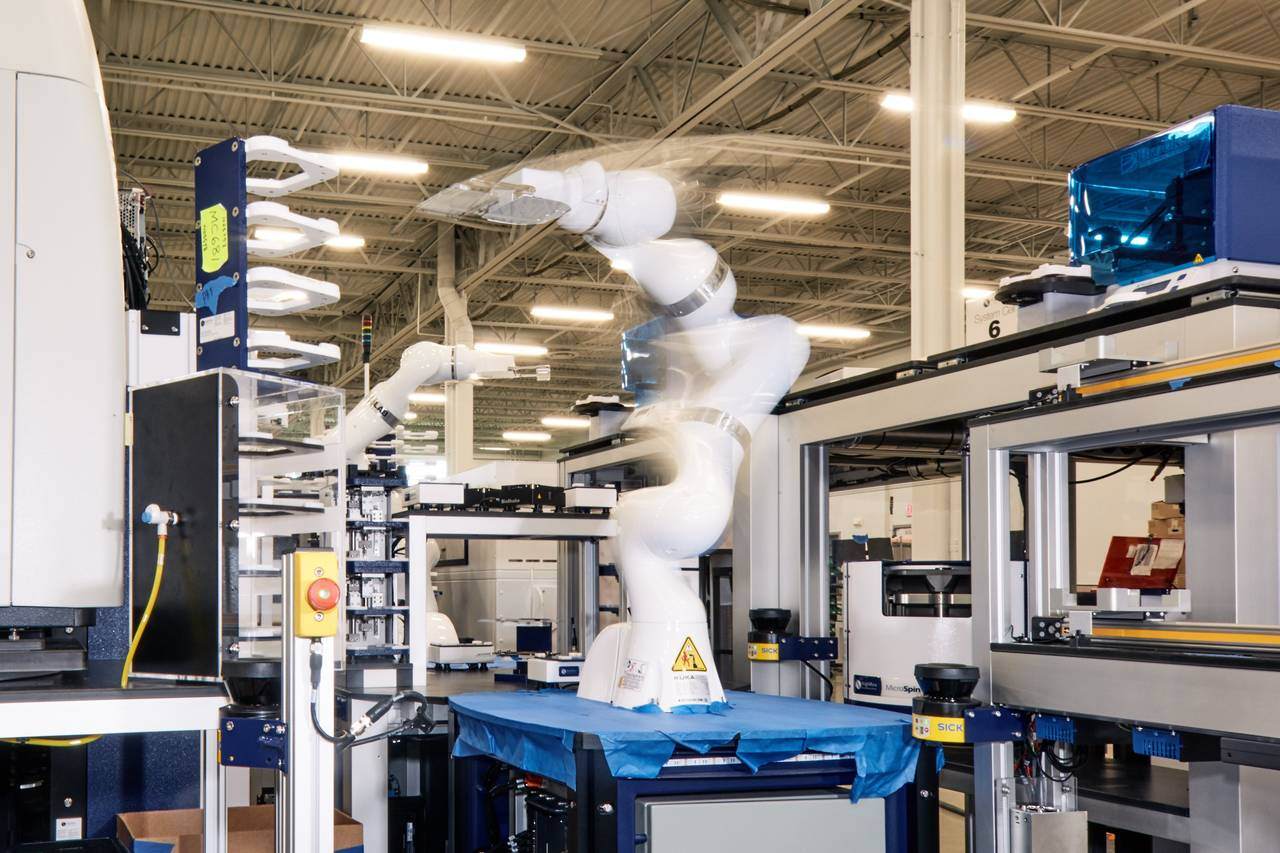
Robotic lab techs don’t need to stop for rest. Unlike humans, they can shuttle samples 24/7.
Featured on WSJ.com By Daniela Hernandez
The scientist hunched over beakers, conducting drug research by hand, may soon be a memory.
Companies like Eli Lilly & Co. and GlaxoSmithKline PLC are investing in automation with the hope of transforming drug discovery from an enterprise where humans do manual experiments to one where robots handle thousands of samples around the clock. This automation will be key to developing better therapies more efficiently, drug companies say, as research and development becomes more labor intensive amid the push toward more-tailored medicines.
Robots are attractive to pharmaceutical companies because they’re “relentless…they never stop,” says Peter Harris, chief executive of HighRes Biosolutions, a Beverly, Mass.,-based company that supplies automated systems for pharmaceutical clients. The software that controls the machines “is able to keep track of many more things in parallel than a human.”
Lilly recently put $90 million into a new 300,000-square-foot research center in San Diego, where robots are helping to speed up the pace of scientific discovery. In one installation, four glass-enclosed robotic arms grow cells, isolate DNA, and place samples into roughly postcard-sized plastic “plates” that resemble miniature muffin trays. They also shuttle these between various equipment, like measuring machines and incubators, said Dan Skovronsky, president of Lilly’s research labs.

“Ultimately, we want to have humans focus mainly on what they’re best at: thinking and strategy rather than mixing and purifying and shaking [samples], which humans do today,” he said. “It’s not a strategy to reduce our scientific headcount.”
Since launching the facility a year ago, the company has already seen a more-than-fivefold increase in its capacity to screen antibodies, said Dr. Skovronsky. The company is testing these proteins as potential therapies for diseases like cancer and diabetes as well as brain disorders and pain. (None is ready for human testing yet.) By year’s end, he hopes the company will have tested 50,000 antibodies, spanning 30 to 40 different research projects.
Lilly worked with San Diego-based BioSero Inc., another laboratory automation company, to build the robots that inhabit its new facility.
Robotics is also helping companies get more out of their experiments, according to Philip Dell’Orco, vice president for advanced manufacturing technologies at GSK, which is using robots in screening drug candidates for respiratory and infectious diseases, cancer and inflammation.
Reproducibility is a big problem in science, and automation could, in theory, help with that, he said. Robots can get more data from each experiment, and because robots can do the same task in precisely the same way, every test run should be uniform, increasing the value of that information.
Companies are also interested in applying machine learning to drug discovery, he said, and more uniform results could also improve the insights such software systems yield because they are “only as good as the data.”
Used with permission from The Wall Street Journal, WSJ.com. Copyright 2018 Dow Jones & Company, Inc. All rights reserved.
